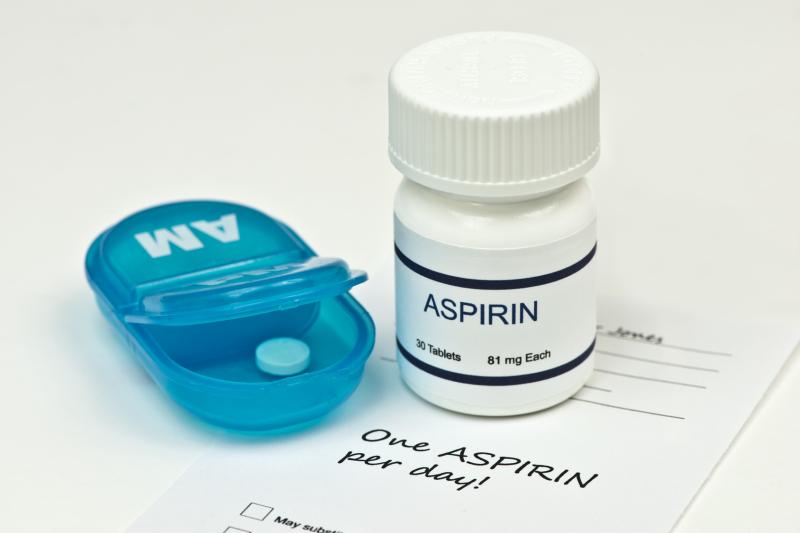 For nearly 100 years, aspirin has been a common drug used for pain relief and fever treatment.
For nearly 100 years, aspirin has been a common drug used for pain relief and fever treatment.A simplified risk stratification protocol used to select patients for twice-daily aspirin therapy for venous thromboembolism (VTE) prophylaxis has been shown to be safe and effective in those undergoing total joint replacement (TJR), reports a recent study.
Furthermore, surgical site infections and rates of return to operating room appear to be lower when compared to universal warfarin therapy.
The authors carried out a retrospective cohort study to compare 30-day postoperative outcomes 6 months before and after the implementation of the aspirin protocol (1 January 2015) in patients undergoing TJR.
The protocol group included patients who used aspirin 325 mg twice daily or warfarin if deemed high thrombotic risk or aspirin intolerant by the criteria set forth by the aspirin protocol. The control group included those on warfarin for VTE prophylaxis.
A total of 449 patients were included. There was no difference between the control and the protocol groups in the rates of 30-day postoperative bleeding, VTE, death, composite endpoint of VTE and death, and length of stay (pall>0.05).
Thirty-day postoperative surgical site infections (5.8 percent vs 1.2 percent; p=0.02) and return to operating room (3.9 percent vs 0.4 percent; p=0.03) occurred less frequently in the protocol group compared with the control group.
In a 2016 study by Huang and his team, results showed that aspirin is safer than warfarin and just as effective for VTE prophylaxis following TJR, even in patients at increased VTE risk. [J Arthroplasty 2016;doi:10.1016/j.arth.2016.02.074]